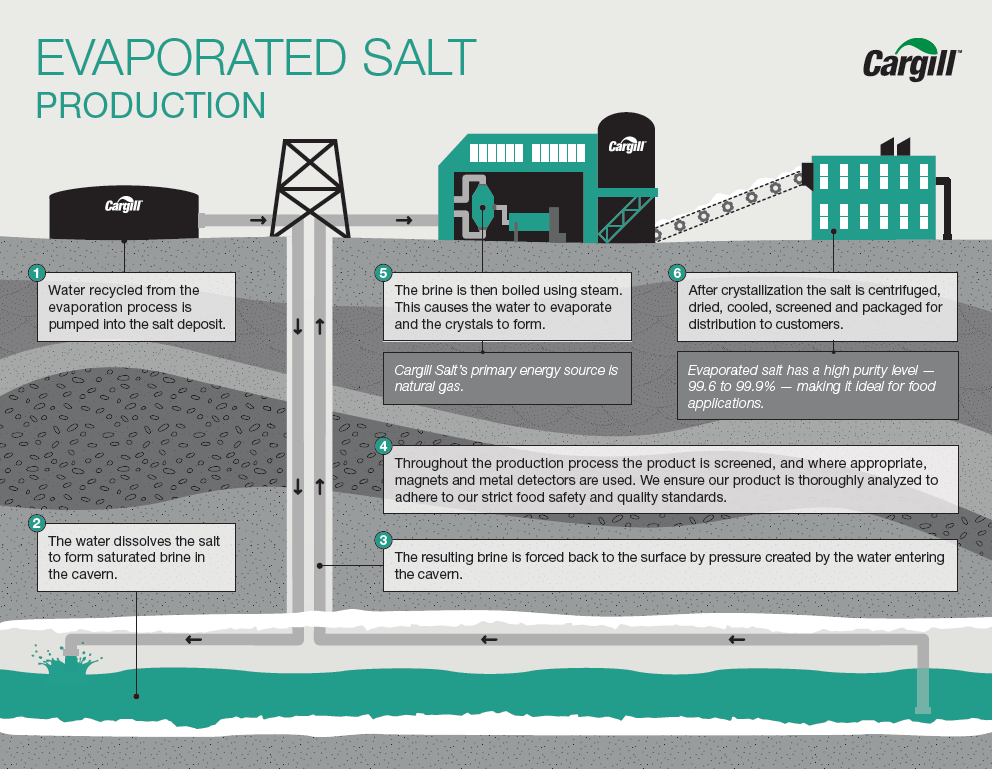Where Does Food Grade Potassium Chloride Come From?
Food Grade Potassium Chloride is a mineral compound that's commonly extracted from beneath the earth.
Food grade potassium chloride is a mineral compound that is commonly extracted from beneath the earth, in lake brines, and in ocean water—much like that of table salt (sodium chloride).1
At Cargill Salt, we recently became the first food company to domestically produce food grade potassium chloride.2 We source our potassium chloride from one of the largest mineral deposits of its kind in Canada. Then we send this raw ingredient to our new production facility in Watkins Glen, NY where it is dissolved and taken through a crystallization process.
This production method for our food grade potassium chloride is nearly identical to that of our standard sodium chloride salts. Both food grade potassium chloride salt and sodium chloride salt undergo what is referred to as an “evaporated production process,” which is ideal for food applications since evaporated salt generally delivers a high purity level – between 99.6 to 99.9%. To learn more about the salt evaporation process, refer to the diagram below.
Evaporated Salt Production, otherwise referred to as “Solution Mining,” describes the process of evaporating moisture from a manufactured brine to form salt crystals. Freshwater is injected into an underground salt deposit where it dissolves the salt into a saturated brine. This brine is then pumped back to the surface where it is boiled and evaporated to create salt crystals.

Sources:
- https://www.infoplease.com/encyclopedia/science/chemistry/elements/potassium-chloride
- https://www.cargill.com/2017/cargill-investing-in-potassium-chloride-facility
